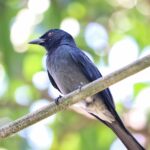
🚨 Important Disclaimer
This article discusses Aokigahara Forest and its historical association with suicide. Our goal is to shed light on the forest’s ecological importance and the ongoing mental health awareness and suicide prevention efforts.
If you or someone you know is struggling with mental health or suicidal thoughts, please reach out for help. You are not alone.
📞 In Crisis? Get Help Now:
- United States: Call or text 988 – Suicide & Crisis Lifeline
- Japan (English): Tokyo English Life Line (TELL) – 03‑5774‑0992
- Japan (Japanese): いのちの電話 (Inochi no Denwa) – 0120‑783‑556
- Global: Find your local helpline via Befrienders Worldwide
🌲 Introduction
Aokigahara Forest, also known as the “Sea of Trees,” rests at the northwestern base of Mount Fuji in Japan. Dense, quiet, and carpeted with moss, it feels both mystical and peaceful. Though historically linked with suicide, the forest today symbolizes both resilience and a global call for mental health awareness.
🌋 1. A Natural Wonder: Ecology and Geology
1.1 Formation and Landscape
Aokigahara was born from the lava flows of Mount Fuji’s 864 AD Jōgan eruption, forming a solid basaltic floor over which the forest grew. Its rugged terrain, gnarled roots, and acoustic silence have contributed to both its beauty and eerie reputation.
1.2 Unique Ecosystem
The forest supports diverse flora like Japanese hemlock and fungi, and fauna including foxes and bats. Beneath its surface lie lava tubes and caves, such as the Fugaku Wind Cave and Narusawa Ice Cave, which draw nature-loving tourists.
1.3 Cultural Beliefs
Before its modern associations, Aokigahara was believed to house yūrei (spirits) and was used by monks for ascetic training. These beliefs were rooted in Japanese folklore, where forests symbolized transitions between the worlds of the living and the dead.
🧠 2. From Dark Reputation to Intervention
2.1 A Sensitive Legacy
Aokigahara gained attention in the 20th century due to a rise in suicides, which was further sensationalized by media (Time). However, local communities and the Japanese government responded with determination and empathy.
2.2 Suicide Prevention Efforts
- Bilingual signs throughout the forest offer messages of hope and list suicide prevention hotlines (NHK).
- Volunteers and local police regularly patrol the area to help those in distress (Japan Times).
- In recent years, drones with thermal imaging and PA systems have been deployed to assist in locating individuals quickly (Japan Times).
2.3 Broader Mental Health Advocacy
Japan’s Ministry of Health, Labour and Welfare has launched nationwide campaigns to destigmatize mental illness and encourage early support-seeking behavior, especially among youth.
🌱 3. A Message of Hope: Reclaiming the Narrative
3.1 A Place of Healing
Today, Aokigahara is seen by many not as a place of darkness, but as a symbol of resilience. It represents the ongoing battle for mental well-being, supported by countless volunteers, social workers, and hikers who visit with compassion.
3.2 Intervention Works
Evidence shows that helplines and early support save lives (988). The forest is becoming a real-world testament to that truth.
3.3 Nature’s Role in Mental Wellness
Research suggests that nature can reduce stress, anxiety, and depression (NIH). Visitors are often overwhelmed not by despair, but by the stillness and beauty of this ancient forest.
🧭 4. Visiting Aokigahara: Practical Guidance
4.1 What to See
- Lava Caves: Fugaku Wind Cave, Narusawa Ice Cave
- Accessible Trails: Marked paths provide safe routes to explore the forest’s geological beauty.
⚠️ 4.2 Visit Responsibly
Do not stray off marked paths. Not only is it dangerous due to the rough terrain and GPS inaccuracy, but it’s also respectful to avoid sensitive, patrolled areas.
🧡 Conclusion
Aokigahara Forest is no longer just a site with a dark past. It’s a living monument to the power of awareness, compassion, and action. From moss-covered trails to hopeful signposts, every corner reminds us that help is always available—and that we’re never truly alone.
🙋♂️ About the Author
Sandeep is an independent writer with a deep interest in nature, mental health awareness, and responsible storytelling. While not a certified mental health professional, he believes that honest conversations and accessible information can make a real difference. Through his writing, he hopes to promote empathy, awareness, and support for those who need it.
📅 Published on: June 17, 2025









